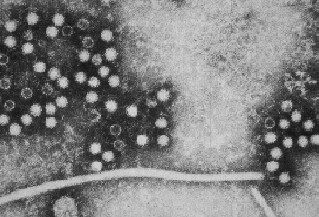| Causes/ Source |
|
HAV is acquired by fecal contamination or through oral/anal activities.
HBV is transmitted by infected though contact of blood and sexually through saliva, semen, or menstrual blood. About 70% of children who's mothers have HBV will be HBV positive by they time they are six months old.
Hepatitis C is caused by a variety of viruses. They are all blood born and can be spread by blood transfusion. They can also be transmitted sexually.
Hepatitis E travels via fecal-oral contact and contaminated water, much like HAV. It has caused major epidemic in Asia, Africa, and Mexico.
| Effects/ Symptoms |
For the HAV, symptoms usually appear 2 to 6 weeks after exposure. The virus is most contagious during this period. The liver becomes tender and swollen. Bilirubin, which is a substance produced by the liver to break down old blood cells, acumulate in the blood stream. Victims experience jaundice, weakness, brownish urine, lack of appetite, and low-grade fever for several days.
HBV and hepatitis C have the same symptoms as HAV except symptoms show up between six weeks to six months after infection. Symptoms usualy last longer and more severe however. About 10% of the people in the U.S. with HBV develop chronic liver disease. About 50% of the people in the U.S. with hepatitis C develop this disease.

![]() Hepatitis E virus (HEV) is a spherical, nonenveloped, single stranded RNA virus that is approximately 32 to 34 nm in diameter.
Hepatitis E virus (HEV) is a spherical, nonenveloped, single stranded RNA virus that is approximately 32 to 34 nm in diameter.
Picture from the CDC
| .. Next page |